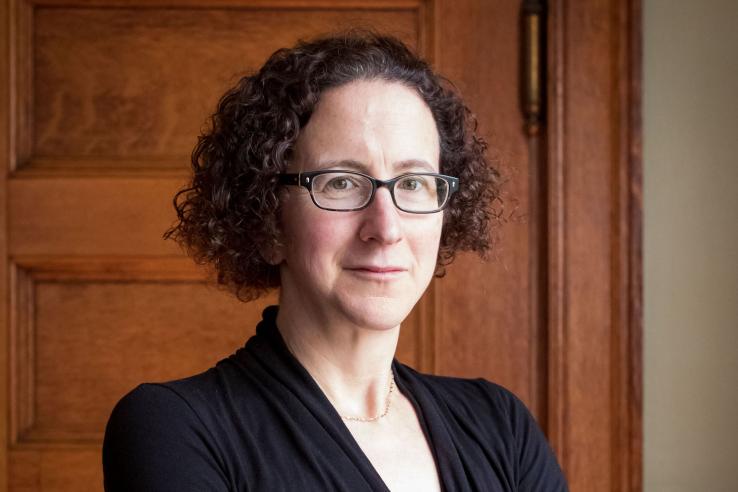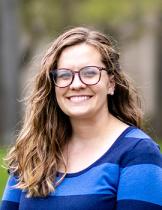
Affiliate spotlight: An interview with Amy Finkelstein on how randomized evaluations provide key insights for her new book on health insurance reform

Amy Finkelstein, co-scientific director of J-PAL North America, co-authored the book We’ve Got You Covered with Liran Einav, which examines the health care system in the United States and proposes how it should be redesigned. In this post, J-PAL staff sat down with Amy to discuss how randomized evaluations played a role in her research and writing of the book.
In your own words, what are the main takeaways of the book?
The problems with the US health insurance system are not limited to the uninsured. There are many problems faced by the currently insured—they may lose their coverage at any moment or face very high medical bills for supposedly covered care. By looking at the history of how we've attempted to deal with these issues, it becomes clear that incremental reform can't solve these problems. We propose a system with automatic universal basic coverage and the ability to supplement that coverage with additional coverage for people who want it and can afford it.
In your book, you make the point that those who lack health insurance aren't truly uninsured because the United States has demonstrated a universal commitment to help those in need. You mentioned that this was demonstrated by the results of the 2008 Oregon Health Insurance Experiment. Can you elaborate on these results and how they informed your conclusions?
Admittedly it's a bit strange to start with the observation that no one is actually uninsured in a book about how we need to radically reform US health insurance. But as we discuss, there are many public policies and public expenditures on programs that are designed to provide free or low-fee access to health care for the uninsured or underinsured. You can figure out the amount of public expenditures on that, but then it's hard to understand if that is a lot or a little. We realized the Oregon Experiment had actually provided us with that answer.
The results show that having formal insurance is better than not being enrolled in a health insurance program; for example, we find that covering uninsured adults with Medicaid increases their health care spending by about 25 percent. But the other side of that coin is that the people without insurance receive four-fifths, or 80 percent, as much medical care as they would if they were insured. We also knew both from the survey evidence, from this study and other national surveys, that uninsured individuals pay for only a very small portion of the care they receive, about 20 cents on the dollar. Being truly uninsured means that any medical care you receive, you pay the full price for. These results make it very clear that even the ‘uninsured’ have some form of health insurance.
Many randomized evaluations have shown that nudges, such as letters, emails, and phone calls, have increased the take-up of health insurance among people who are eligible but have not enrolled. What lessons did you draw from these studies in your book, and how did this influence your suggestions of what we should do to promote take-up?
That body of evidence shows that information, transaction costs, and application costs are barriers to enrollment, and that providing people with more information or reducing the hassles involved in applying increases enrollment. I've always viewed those studies as a case of the glass half full. They move the needle, but only by a few percentage points. We still haven't found a low-cost way of getting everyone enrolled.
These studies show that it's not a simple matter of reminding people. We can't just have more incremental reforms to expand eligibility for free or low-fee health insurance to the people who are not currently eligible in the United States or to try and do a little bit of administrative reform to make it easier to enroll people. Of people who currently lack insurance, about six in ten actually are eligible for either free or heavily discounted health insurance. What all these randomized evaluations have shown is that we can try to move the needle a tiny bit for people who are already eligible, but it's hard to move it much. If you want to get to universal coverage, it needs to be automatic.
You also discuss the RAND Health Insurance Experiment, which was conducted in the 1970s. This was a randomized evaluation that showed how some cost-sharing reduces the use of health services with little effect on health for the average person and has been cited again and again to encourage cost-sharing and copays in health insurance to cut down costs without sacrificing well-being. However, your conclusion in the book is the opposite of what the general consensus has been for about 50 years—you advocate for a system with no cost sharing. How did the RAND experiment influence this conclusion?
An advantage of randomized evaluations is that they provide clear and credible results that enable stronger conclusions. However, they are an input to policy and don't exist in a vacuum. We don’t disagree with the results of the RAND Experiment, the Oregon Experiment, or our previous work and the work of countless others that have all demonstrated when people have to pay something for their medical care, they use less of it. We stand by those facts. It's just not clear the conclusions we drew from them as economists are warranted, at least in the context of universal basic coverage.
This is because we can now see what has happened over the last half-century as many countries followed the advice of economists and introduced or increased copays and cost-sharing in their universal coverage plans. They tend to introduce the copays with one hand and almost simultaneously the exceptions with the other hand to cover the copays for particular groups of patients. These exceptions become so common that the copays can't actually achieve their function because so many people are exempt from them.
The result is a lot of extra hassles for patients and administrative costs for the government with very little to show in the way of actual health care cost savings.
Of course, our stance against co-pays doesn’t apply to supplemental coverage. If a private insurer thinks that the best way to manage care is to have high deductibles for this non-essential coverage, then I think economics has potentially a lot to offer. But this lesson doesn’t seem to work in the context of universal basic coverage.
In your opinion, what broader implications does your experience in writing this book have on randomized evaluations and how J-PAL approaches our work?
Randomized evaluations are valuable in getting you to a result you can be confident is a true causal effect, which allows you to think more about the interpretation or implications of the results and more broadly connect the findings to other valuable disciplines. I would have been very uncomfortable writing this book based solely on my reading of history, but I would have felt equally uncomfortable trying to assert what we're trying to do based solely on the results of randomized evaluations without seeing it in the context of history.
Related Content

Affiliate spotlight: An interview with Amy Finkelstein on how her recent MacArthur Fellow award opens up new possibilities in innovative research

Overcoming administrative burdens: Strategies to increase FAFSA filing in the United States

